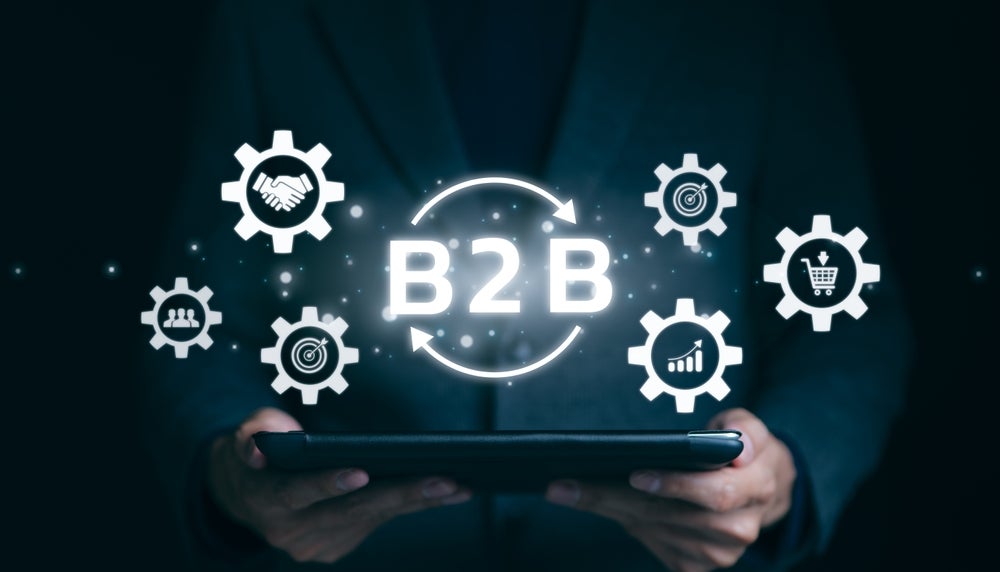
The enterprise knowledge base of the future is a meeting centric knowledge base. “It’s voice knowledge,” says Sam Liang, founder and CEO of voice transcription company Otter.ai. But to achieve an effective and organic repository of all enterprise activity in real-time, everything must be recorded. Liang imagines a future in which apps like Otter.ai will be “always on” and all meetings will be recorded and uploaded automatically. “You won’t even need to remember to press a button,” he effuses.
For this scenario to evolve as Liang imagines, the current cultural shift towards radical transparency will need to advance further. Much is generational. Younger workers who live their lives online are digital natives and don’t have the privacy objections of older colleagues.

Access deeper industry intelligence
Experience unmatched clarity with a single platform that combines unique data, AI, and human expertise.
Liang founded Otter.ai in 2016 with fellow computer science engineer Yun Fu, both of whom had a long history of working with AI. At the time, Liang recounts how resistance among investors to recording meetings was strong. “VCs told me nobody will use this [Otter.ai] because nobody wants to be recorded. People will be scared. But VCs are not very good at predicting the future and they don’t understand behavioural change,” says Liang who has since grown the company to $100m annual recurring revenue and over 25 million users worldwide.
While Otter.ai has become a valuable subscription-based voice transcription tool for users across various professions, the company’s focus is firmly on capturing the enterprise market with its enhanced AI features. Enterprise customers already include Walgreens, NBC Universal, Grant Thornton and IBM. But Otter.ai launched a suite of enterprise tools on 7 October with a view to expanding its reach into the enterprise market. At a time when enterprise AI investments are becoming less hyped and more scrutinised, Liang says Otter.ai’s draw is efficiency that provides tangible return on investment (ROI).
According to data drawn from Otter.ai’s enterprise customers’ own ROI calculations, the platform saves the equivalent workload of a single full-time employee for every 20 users. A company with a thousand users, for example, saves 50 full-time employee’s worth of work translating to over $6m in annual cost savings (based on $125K per full-time employee).
Behind the ROI data, if Liang were to get granular about time saving processes, he says it’s so much more than Otter.ai’s ability to generate meeting notes. While employees can audit and search meeting notes in the review phase, they can skip meetings altogether. “You don’t have to sit through a two-hour meeting but still say informed by spending just 10 minutes to get the information you need from a 90-minute meeting,” explains Liang.

US Tariffs are shifting - will you react or anticipate?
Don’t let policy changes catch you off guard. Stay proactive with real-time data and expert analysis.
By GlobalDataMeetings are, by far, the most expensive activity in enterprises. And according to ArchieApp’s October 2025 statistics, employees spend 11.3 hours per week in meetings, which equates to almost a third of the average work week. Senior executives spend around 50% of their work week in meetings. Meeting time costs an average of $29k per employee per year, not including the extra hours spent on scheduling.
When pressed on how Otter.ai can compete with some of its large blue-chip competitors like Microsoft copilot or Zoom AI companion, Liang says its large competitors are less innovative. “They’re really good at copying other companies, but they’re usually late,” he says citing the example of messaging platform Slack which Microsoft didn’t copy until Slack was a $10bn company.
“So we do compete against them in some way, but we’re always ahead of them in terms of innovation. And the advantage we have over Microsoft is our platform agnostic nature. Microsoft only supports Microsoft. But we support all the meeting platforms, Zoom, Microsoft, Google.”
Transparency is key for the efficient enterprise
But the real magic of an agentic AI driven meetings platform has yet to be realised, according to Liang. The cross functionality delivered by breaking down information silos within an organisation can be done most effectively through a meetings platform. This is where business leaders need some imagination.
Spoken or voice information will very soon surpass written documentation as the most valuable enterprise data as AI delivers on its promise to fully draft and deliver completed written documentation.
“Traditionally, when people talk about knowledge base, they only think about written documents. Almost everyone has overlooked voice knowledge. Now we’re capturing voice, digitising and indexing everything,” says Liang. Essentially, Liang and Otter’s future is a wholesale bet on a company’s voice knowledge base becoming the dominant data knowledge base of the future.
Voice data gathered at meetings represents a real-time picture of what is happening within the organisation. “In the modern enterprise world, the market changes, products changes, customer changes, everything changes so fast that meetings have the most up-to-date information compared to written plans or documentation. Plans you wrote a month ago may be already obsolete, or perhaps 30% obsolete, but the meetings usually have the most up to date information,” says Liang.
But it’s the cross functionality of an agentic AI system that can extract the most value from a platform like Otter.ai. Different teams within an enterprise – marketing, sales, product and customer success teams – all have their own meetings, but the information is usually siloed and not shared quickly despite so many cross functional dependencies, with most relying on previously made a plans or schedules.
Otter.ai has a Slack-style workspace structure which helps organise meetings using either public or private channels. “We encourage enterprises to make as many meetings as possible transparent, so that their enterprise can operate much more efficiently.
The company practices what it preaches. All meetings at Otter.ai are shared publicly, except for a few HR meetings, or some highly confidential meetings which remain in private channels. Almost all customer and sales meetings are shared transparently inside the company, so that all departments get first-hand customer information. As an example, this informs the product team what customers need and what problems they’re having with current products, as well as what additional product features they need, all in real-time.
Transparency versus privacy – a zero sum game?
Liang is a passionate advocate of wholesale transparency within the enterprise, believing the benefits outweigh privacy concerns. But the resistance he felt from investors in his early fund-raising days remains, as privacy becomes a central issue in the march towards global AI adoption.
In recent months the company has become part of a wider conversation about the increasing use of AI transcription tools within the workplace. In August, the company was accused in a federal class-action lawsuit of deceptively and surreptitiously recording private conversations without obtaining permission and then using them to train its AI models.
The lawsuit claimed that the company’s real-time transcriptions of Zoom, Google Meet and Microsoft Teams meetings, do not require permission to record from attendees and that the company uses these conversations to train its AI models.
However, Otter says its privacy policy discloses the transcription content being used for AI training. It says it provides an explicit opt-in option that allows Otter and third parties to use the private conversations “for training and product improvement purposes.”
As for privacy within the enterprise, Liang encourages the wholesale recording of all meetings with only a few exceptions. Otter.ai provides the ability to create rules to keep some meetings private. “You can create rules, for example, if this meeting involves this person it should always be kept private, or if this meeting has a certain keyword, you can create certain tag in the meeting title or in the meeting description that provides the instruction not to share publicly,” explains Liang.
“We have created a system that allows you to create rules to control the visibility of each meeting, and we’re working on rules that specify not to record certain meetings,” he adds.
Liang advises business leaders to keep an open mind and overcome privacy fears. He notes that the majority of existing privacy laws were created before the advent of the internet. “I do think privacy laws needs to be enhanced to support the new AI world,” he adds.
For business leaders, Liang’s advice is to first recognise how AI is changing the world they operate in. “So then the way they operate should change as well. Early adopters are moving forward with this technology. There’s almost no choice if you want to make your enterprise more productive.”
Liang’s process of leading by example has seen the company building specific workflows for those business leaders. He says some 95% of his own meetings are recorded and shared with all attendees and 50% of his meetings are transparent to the wider business. “I, myself, as a founder and CEO of Otter have to manage so many projects, so many different departments. I actually rely on Otter to gain insights about how things are operating within the company,” he explains.
Liang’s hope is leaders will see for themselves how a tool like Otter will help them manage their company better, and will then recognise the value and become convinced of the wider benefits for their company.







